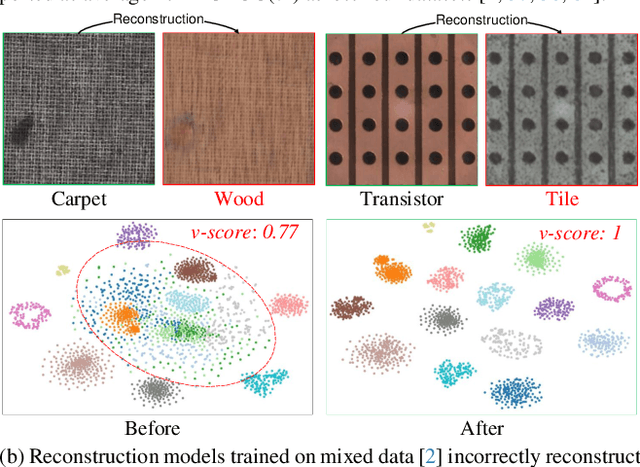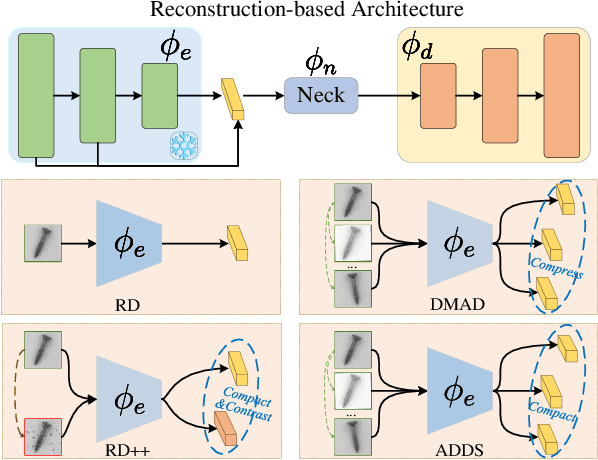Maurice Pagnucco
Temporal Alignment of Time Sensitive Facts with Activation Engineering
May 20, 2025Abstract:Large Language Models (LLMs) are trained on diverse and often conflicting knowledge spanning multiple domains and time periods. Some of this knowledge is only valid within specific temporal contexts, such as answering the question, "Who is the President of the United States in 2022?" Ensuring LLMs generate time appropriate responses is crucial for maintaining relevance and accuracy. In this work we explore activation engineering as a method for temporally aligning LLMs to improve factual recall without any training or dataset creation. In this research we explore an activation engineering technique to ground three versions of LLaMA 2 to specific points in time and examine the effects of varying injection layers and prompting strategies. Our experiments demonstrate up to a 44% and 16% improvement in relative and explicit prompting respectively, achieving comparable performance to the fine-tuning method proposed by Zhao et al. (2024) . Notably, our approach achieves similar results to the fine-tuning baseline while being significantly more computationally efficient and requiring no pre-aligned datasets.
Prototype-Based Image Prompting for Weakly Supervised Histopathological Image Segmentation
Mar 15, 2025Abstract:Weakly supervised image segmentation with image-level labels has drawn attention due to the high cost of pixel-level annotations. Traditional methods using Class Activation Maps (CAMs) often highlight only the most discriminative regions, leading to incomplete masks. Recent approaches that introduce textual information struggle with histopathological images due to inter-class homogeneity and intra-class heterogeneity. In this paper, we propose a prototype-based image prompting framework for histopathological image segmentation. It constructs an image bank from the training set using clustering, extracting multiple prototype features per class to capture intra-class heterogeneity. By designing a matching loss between input features and class-specific prototypes using contrastive learning, our method addresses inter-class homogeneity and guides the model to generate more accurate CAMs. Experiments on four datasets (LUAD-HistoSeg, BCSS-WSSS, GCSS, and BCSS) show that our method outperforms existing weakly supervised segmentation approaches, setting new benchmarks in histopathological image segmentation.
Interpretable Image Classification via Non-parametric Part Prototype Learning
Mar 13, 2025Abstract:Classifying images with an interpretable decision-making process is a long-standing problem in computer vision. In recent years, Prototypical Part Networks has gained traction as an approach for self-explainable neural networks, due to their ability to mimic human visual reasoning by providing explanations based on prototypical object parts. However, the quality of the explanations generated by these methods leaves room for improvement, as the prototypes usually focus on repetitive and redundant concepts. Leveraging recent advances in prototype learning, we present a framework for part-based interpretable image classification that learns a set of semantically distinctive object parts for each class, and provides diverse and comprehensive explanations. The core of our method is to learn the part-prototypes in a non-parametric fashion, through clustering deep features extracted from foundation vision models that encode robust semantic information. To quantitatively evaluate the quality of explanations provided by ProtoPNets, we introduce Distinctiveness Score and Comprehensiveness Score. Through evaluation on CUB-200-2011, Stanford Cars and Stanford Dogs datasets, we show that our framework compares favourably against existing ProtoPNets while achieving better interpretability. Code is available at: https://github.com/zijizhu/proto-non-param.
Structure based SAT dataset for analysing GNN generalisation
Feb 17, 2025Abstract:Satisfiability (SAT) solvers based on techniques such as conflict driven clause learning (CDCL) have produced excellent performance on both synthetic and real world industrial problems. While these CDCL solvers only operate on a per-problem basis, graph neural network (GNN) based solvers bring new benefits to the field by allowing practitioners to exploit knowledge gained from solved problems to expedite solving of new SAT problems. However, one specific area that is often studied in the context of CDCL solvers, but largely overlooked in GNN solvers, is the relationship between graph theoretic measure of structure in SAT problems and the generalisation ability of GNN solvers. To bridge the gap between structural graph properties (e.g., modularity, self-similarity) and the generalisability (or lack thereof) of GNN based SAT solvers, we present StructureSAT: a curated dataset, along with code to further generate novel examples, containing a diverse set of SAT problems from well known problem domains. Furthermore, we utilise a novel splitting method that focuses on deconstructing the families into more detailed hierarchies based on their structural properties. With the new dataset, we aim to help explain problematic generalisation in existing GNN SAT solvers by exploiting knowledge of structural graph properties. We conclude with multiple future directions that can help researchers in GNN based SAT solving develop more effective and generalisable SAT solvers.
Revitalizing Reconstruction Models for Multi-class Anomaly Detection via Class-Aware Contrastive Learning
Dec 06, 2024



Abstract:For anomaly detection (AD), early approaches often train separate models for individual classes, yielding high performance but posing challenges in scalability and resource management. Recent efforts have shifted toward training a single model capable of handling multiple classes. However, directly extending early AD methods to multi-class settings often results in degraded performance. In this paper, we analyze this degradation observed in reconstruction-based methods, identifying two key issues: catastrophic forgetting and inter-class confusion. To this end, we propose a plug-and-play modification by incorporating class-aware contrastive learning (CL). By explicitly leveraging raw object category information (e.g., carpet or wood) as supervised signals, we apply local CL to fine-tune multiscale features and global CL to learn more compact feature representations of normal patterns, thereby effectively adapting the models to multi-class settings. Experiments across four datasets (over 60 categories) verify the effectiveness of our approach, yielding significant improvements and superior performance compared to advanced methods. Notably, ablation studies show that even using pseudo-class labels can achieve comparable performance.
MANTA: A Large-Scale Multi-View and Visual-Text Anomaly Detection Dataset for Tiny Objects
Dec 06, 2024Abstract:We present MANTA, a visual-text anomaly detection dataset for tiny objects. The visual component comprises over 137.3K images across 38 object categories spanning five typical domains, of which 8.6K images are labeled as anomalous with pixel-level annotations. Each image is captured from five distinct viewpoints to ensure comprehensive object coverage. The text component consists of two subsets: Declarative Knowledge, including 875 words that describe common anomalies across various domains and specific categories, with detailed explanations for < what, why, how>, including causes and visual characteristics; and Constructivist Learning, providing 2K multiple-choice questions with varying levels of difficulty, each paired with images and corresponded answer explanations. We also propose a baseline for visual-text tasks and conduct extensive benchmarking experiments to evaluate advanced methods across different settings, highlighting the challenges and efficacy of our dataset.
Soft Tensor Product Representations for Fully Continuous, Compositional Visual Representations
Dec 05, 2024Abstract:Since the inception of the classicalist vs. connectionist debate, it has been argued that the ability to systematically combine symbol-like entities into compositional representations is crucial for human intelligence. In connectionist systems, the field of disentanglement has emerged to address this need by producing representations with explicitly separated factors of variation (FoV). By treating the overall representation as a *string-like concatenation* of the inferred FoVs, however, disentanglement provides a fundamentally *symbolic* treatment of compositional structure, one inherently at odds with the underlying *continuity* of deep learning vector spaces. We hypothesise that this symbolic-continuous mismatch produces broadly suboptimal performance in deep learning models that learn or use such representations. To fully align compositional representations with continuous vector spaces, we extend Smolensky's Tensor Product Representation (TPR) and propose a new type of inherently *continuous* compositional representation, *Soft TPR*, along with a theoretically-principled architecture, *Soft TPR Autoencoder*, designed specifically for learning Soft TPRs. In the visual representation learning domain, our Soft TPR confers broad benefits over symbolic compositional representations: state-of-the-art disentanglement and improved representation learner convergence, along with enhanced sample efficiency and superior low-sample regime performance for downstream models, empirically affirming the value of our inherently continuous compositional representation learning framework.
Dataset Distillation for Histopathology Image Classification
Aug 19, 2024Abstract:Deep neural networks (DNNs) have exhibited remarkable success in the field of histopathology image analysis. On the other hand, the contemporary trend of employing large models and extensive datasets has underscored the significance of dataset distillation, which involves compressing large-scale datasets into a condensed set of synthetic samples, offering distinct advantages in improving training efficiency and streamlining downstream applications. In this work, we introduce a novel dataset distillation algorithm tailored for histopathology image datasets (Histo-DD), which integrates stain normalisation and model augmentation into the distillation progress. Such integration can substantially enhance the compatibility with histopathology images that are often characterised by high colour heterogeneity. We conduct a comprehensive evaluation of the effectiveness of the proposed algorithm and the generated histopathology samples in both patch-level and slide-level classification tasks. The experimental results, carried out on three publicly available WSI datasets, including Camelyon16, TCGA-IDH, and UniToPath, demonstrate that the proposed Histo-DD can generate more informative synthetic patches than previous coreset selection and patch sampling methods. Moreover, the synthetic samples can preserve discriminative information, substantially reduce training efforts, and exhibit architecture-agnostic properties. These advantages indicate that synthetic samples can serve as an alternative to large-scale datasets.
DARNet: Bridging Domain Gaps in Cross-Domain Few-Shot Segmentation with Dynamic Adaptation
Dec 08, 2023Abstract:Few-shot segmentation (FSS) aims to segment novel classes in a query image by using only a small number of supporting images from base classes. However, in cross-domain few-shot segmentation (CD-FSS), leveraging features from label-rich domains for resource-constrained domains poses challenges due to domain discrepancies. This work presents a Dynamically Adaptive Refine (DARNet) method that aims to balance generalization and specificity for CD-FSS. Our method includes the Channel Statistics Disruption (CSD) strategy, which perturbs feature channel statistics in the source domain, bolstering generalization to unknown target domains. Moreover, recognizing the variability across target domains, an Adaptive Refine Self-Matching (ARSM) method is also proposed to adjust the matching threshold and dynamically refine the prediction result with the self-matching method, enhancing accuracy. We also present a Test-Time Adaptation (TTA) method to refine the model's adaptability to diverse feature distributions. Our approach demonstrates superior performance against state-of-the-art methods in CD-FSS tasks.
Identifying the Defective: Detecting Damaged Grains for Cereal Appearance Inspection
Nov 20, 2023Abstract:Cereal grain plays a crucial role in the human diet as a major source of essential nutrients. Grain Appearance Inspection (GAI) serves as an essential process to determine grain quality and facilitate grain circulation and processing. However, GAI is routinely performed manually by inspectors with cumbersome procedures, which poses a significant bottleneck in smart agriculture. In this paper, we endeavor to develop an automated GAI system:AI4GrainInsp. By analyzing the distinctive characteristics of grain kernels, we formulate GAI as a ubiquitous problem: Anomaly Detection (AD), in which healthy and edible kernels are considered normal samples while damaged grains or unknown objects are regarded as anomalies. We further propose an AD model, called AD-GAI, which is trained using only normal samples yet can identify anomalies during inference. Moreover, we customize a prototype device for data acquisition and create a large-scale dataset including 220K high-quality images of wheat and maize kernels. Through extensive experiments, AD-GAI achieves considerable performance in comparison with advanced AD methods, and AI4GrainInsp has highly consistent performance compared to human experts and excels at inspection efficiency over 20x speedup. The dataset, code and models will be released at https://github.com/hellodfan/AI4GrainInsp.
 Add to Chrome
Add to Chrome Add to Firefox
Add to Firefox Add to Edge
Add to Edge